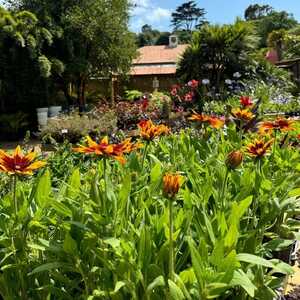
Wildlife is part of what makes Dorset’s gardens so special
Dorset’s gardens are known for their colour, character and rich plantlife – but, look in the just the right places, and you’ll also find natural environments alive with birds, insects and other creatures that thrive in carefully tended landscapes.
At Abbotsbury Subtropical Gardens, a 30-acre paradise on the Jurassic Coast, wildlife moves freely between exotic trees, shaded ponds, and untouched wild-growing corners. For those looking to connect with nature, this is one of the most rewarding garden visits in Dorset.
From the red admiral butterfly to the green woodpecker, Abbotsbury offers the chance to spot a range of species throughout the seasons. Its unique microclimate and plant diversity provide food and shelter for animals that are often harder to spot elsewhere. Every visit brings the possibility of new sightings – especially, of course, if you know where to look!
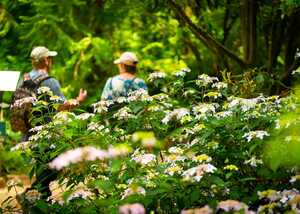
Listen out for the green woodpecker in spring and summer
Distinctive calls echo through quiet garden paths
The gardens’ mix of open lawns and mature trees is ideal territory for green woodpeckers. You’re more likely to hear one before you see it – their short, loud bursts of sound carry across the West Lawn and woodland paths.
The green woodpecker feeds mostly on ants, so keep an eye out for sunlit patches of grass, particularly between spring and late summer. You may see one working the ground beneath the trees or flying low between trunks.
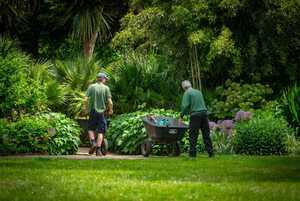
Butterflies thrive in sheltered, sunny spots
Plant diversity brings colour to the air
Abbotsbury’s careful planting and sheltered layout give butterflies a consistent food source and plenty of calm spaces to rest. The camellia groves and magnolia paths are often alive with movement during warm days.
Look for peacocks, red admirals and painted ladies around the café courtyard, or near the pond areas where warmth and still water create ideal conditions. The natural planting along borders also draws in small moths and bees, especially in the early morning or late afternoon.
Look up through the canopy for birdlife
Trees bring in a wide range of native species
The gardens support both year-round and migratory birds. The varied heights of planting – from low ferns to towering evergreens – create layers of habitat that attract robins, blue tits, wrens and blackbirds.
In quieter areas like the Himalayan glade or the winding paths near the lily ponds, you’re likely to hear birdsong from the canopy above. Binoculars aren’t essential, but patience certainly helps! Standing still for a few minutes can reveal more than you expect.
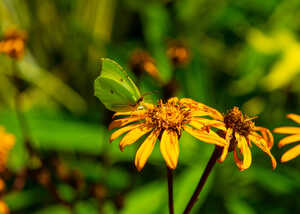
Shaded paths are ideal for spotting frogs and insects
The gardens are full of hidden life at ground level
Moist and shaded areas are home to many smaller creatures. Walk slowly near the rockeries or along the lower woodland trails, and you might spot frogs, beetles or damselflies. Quieter areas are often overlooked by casual visitors but offer rich opportunities for those who take their time.
Meanwhile, planting beds provide a unique angle on local habitats, especially after rain when the air is still and damp. You’ll have to wait until spring and early summer to see the most variety.
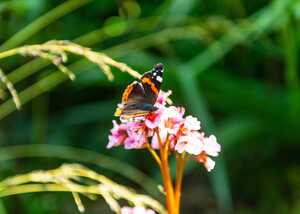
The gardens are a model for supporting biodiversity
Lessons for planting with wildlife in mind
The team behind Abbotsbury’s planting strategy has created a space where both exotic and native species can thrive. It’s a reminder that even ornamental gardens can play a role in supporting biodiversity.
At home, planting a mix of flowering species, reducing pesticide use, and leaving some areas wild can help encourage similar wildlife visits. Taking inspiration from the structure and layering found in beautiful gardens like Abbotsbury can improve the health of any outdoor space.
Discover one of Dorset’s most vibrant garden landscapes
A living example of conservation and care
Posted on October 8th 2025

